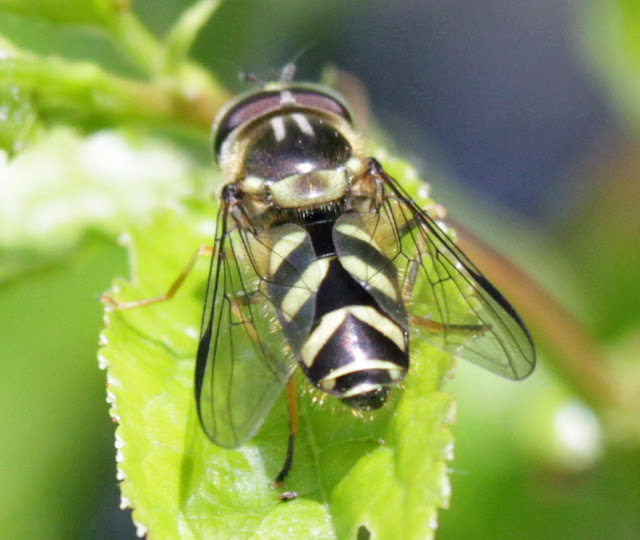After the flood alert last night, I evenually got out for a proper walk with Monty around the access trail, and the sun smiled on me! For the whole of MT122 the wind was too strong for very much, but along MT123 it was more sheltered and there were many Diptera and even some Andrena taking advantage of the sun and the shelter.
Not much luck with the hoverfly identification today - I got knocked back by the top guns on my admittedly rather hopeful male Melangyna cincta, but I have no other ideas as to what it might be!
Much further along the trail, on the plum hedge by Great Court I found a female that seemed to have more parallel abdominal bars - maybe this was a genuine Melangyna cincta! Or maybe the males do actually have bars that do sweep forward, and I was right all along.....
A little bit further along the Great Court Hedge I found my first ever Dasysyrphus albostriatus sheltering from the breeze and enjoying the sun. Its turning out to be rather a good day! The oblique pattern of the abdominal bars together with the grey stripes on the top of the thorax and small yellow patches at the rear of the thorax, and the dark stigma on the wings were pretty convincing:
Not much luck with the hoverfly identification today - I got knocked back by the top guns on my admittedly rather hopeful male Melangyna cincta, but I have no other ideas as to what it might be!
Much further along the trail, on the plum hedge by Great Court I found a female that seemed to have more parallel abdominal bars - maybe this was a genuine Melangyna cincta! Or maybe the males do actually have bars that do sweep forward, and I was right all along.....
A little bit further along the Great Court Hedge I found my first ever Dasysyrphus albostriatus sheltering from the breeze and enjoying the sun. Its turning out to be rather a good day! The oblique pattern of the abdominal bars together with the grey stripes on the top of the thorax and small yellow patches at the rear of the thorax, and the dark stigma on the wings were pretty convincing:













































